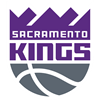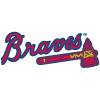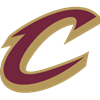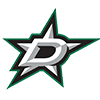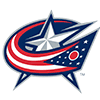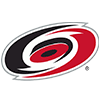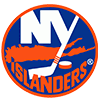Happy (belated) Labor Day weekend everybody. It's a great time to read up on Curt Flood or Marvin Miller, or to check in on the latest efforts to unionize the minors, a movement that has made encouraging progress even in the past few days.
One recent labor win appears to be a big win for fans as well. The latest collective bargaining agreement made an attempt to stop teams from stealing a year of service time from players by pretending that they needed to work on their defense for the first two weeks of the season. Under the new rules, players that are on the active roster on Opening Day and finish in the top three in Rookie of the Year voting grant their teams an extra draft pick, while players who finish top two in voting earn a full year regardless of when they were called up, something which may wind up happening for Adley Rutschman this season.
Those combined incentives largely had their desired effect this past April, with most of the top names who would previously have debuted a few weeks into the season were active on Opening Day. The effect appears to have carried over into September. If a team is already going to call up a top prospect on next year's Opening Day, what's there to lose by giving him an extra cup of coffee this fall?
By my count, 11 of James Anderson's top 400 fantasy prospects were called up either at
Happy (belated) Labor Day weekend everybody. It's a great time to read up on Curt Flood or Marvin Miller, or to check in on the latest efforts to unionize the minors, a movement that has made encouraging progress even in the past few days.
One recent labor win appears to be a big win for fans as well. The latest collective bargaining agreement made an attempt to stop teams from stealing a year of service time from players by pretending that they needed to work on their defense for the first two weeks of the season. Under the new rules, players that are on the active roster on Opening Day and finish in the top three in Rookie of the Year voting grant their teams an extra draft pick, while players who finish top two in voting earn a full year regardless of when they were called up, something which may wind up happening for Adley Rutschman this season.
Those combined incentives largely had their desired effect this past April, with most of the top names who would previously have debuted a few weeks into the season were active on Opening Day. The effect appears to have carried over into September. If a team is already going to call up a top prospect on next year's Opening Day, what's there to lose by giving him an extra cup of coffee this fall?
By my count, 11 of James Anderson's top 400 fantasy prospects were called up either at the start of September or in the final week of August. Teams will want to prevent those players from reaching 130 at-bats or 50 innings pitched, which would exhaust their Rookie of the Year eligibility and deny the organization the chance at the draft-pick payoff they'll be looking for next year, but as a fan, seeing 129 at-bats from these players is certainly preferable to seeing zero.
Corbin Carroll already made the risers list from this group of call-ups last week, as the Diamondbacks elected to call him up shortly before rosters expanded to 28. A few more rookies will join him this week, alongside a handful of more established players who have been making noise recently, for better or for worse.
RISERS
 Zac Gallen, SP, Diamondbacks: What do Gallen and I have in common? We've both given up the same number of earned runs (zero) over the last month. Gallen has gotten to that number in a considerably more impressive way, making six consecutive starts in which he's thrown a total of 41.1 shutout innings while allowing just 16 hits, striking out 46 batters while walking just eight. He looks like mostly the same guy under the surface over that stretch outside of a slight change in his pitch mix, as he's gone from a roughly 1:1 ratio between curveballs and changes to a nearly 2:1 ratio in the curve's favor. Mostly, though, this looks like a pitcher who's been highly-rated but not quite fully reliably in the past putting it all together at age 27. His 3.31 ERA over his first 20 starts this season was already quite strong, though it came with a relatively forgettable 23.3 percent strikeout rate, well below his 27.6 percent mark from his first three seasons. He's all the way up at a 32.9 percent strikeout rate during his current scoreless streak.
Zac Gallen, SP, Diamondbacks: What do Gallen and I have in common? We've both given up the same number of earned runs (zero) over the last month. Gallen has gotten to that number in a considerably more impressive way, making six consecutive starts in which he's thrown a total of 41.1 shutout innings while allowing just 16 hits, striking out 46 batters while walking just eight. He looks like mostly the same guy under the surface over that stretch outside of a slight change in his pitch mix, as he's gone from a roughly 1:1 ratio between curveballs and changes to a nearly 2:1 ratio in the curve's favor. Mostly, though, this looks like a pitcher who's been highly-rated but not quite fully reliably in the past putting it all together at age 27. His 3.31 ERA over his first 20 starts this season was already quite strong, though it came with a relatively forgettable 23.3 percent strikeout rate, well below his 27.6 percent mark from his first three seasons. He's all the way up at a 32.9 percent strikeout rate during his current scoreless streak.
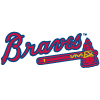 Spencer Strider, SP, Atlanta: I featured Strider in June and again in July, but there's almost no end to the amount of praise he deserves this season. After setting a franchise record with 16 strikeouts against the Rockies his last time out, edging out Hall of Famers Warren Spahn and John Smoltz in the process. That strikeout prowess remains Strider's main draw, as he now ranks 10th overall with 174 punchouts despite the fact that his 114.2 innings leave him well short of counting as a qualified starter. If you lower the threshold to 100 frames, his 38.1 percent strikeout rate trails only 2019 Gerrit Cole and 2018 Chris Sale. Strider isn't some one-dimensional pitcher in the vein of a late 2010s Robbie Ray, either, whose whiffs came with too many walks and homers. He's given up only six long balls all year, and his 8.3 percent walk rate is right around league average. To top everything off, he somehow isn't fading down the stretch despite throwing more innings than ever. He's allowed one or fewer run in six of his seven second-half starts, posting a 2.01 ERA, 0.84 WHIP and 38.5 percent strikeout rate over that stretch.
Spencer Strider, SP, Atlanta: I featured Strider in June and again in July, but there's almost no end to the amount of praise he deserves this season. After setting a franchise record with 16 strikeouts against the Rockies his last time out, edging out Hall of Famers Warren Spahn and John Smoltz in the process. That strikeout prowess remains Strider's main draw, as he now ranks 10th overall with 174 punchouts despite the fact that his 114.2 innings leave him well short of counting as a qualified starter. If you lower the threshold to 100 frames, his 38.1 percent strikeout rate trails only 2019 Gerrit Cole and 2018 Chris Sale. Strider isn't some one-dimensional pitcher in the vein of a late 2010s Robbie Ray, either, whose whiffs came with too many walks and homers. He's given up only six long balls all year, and his 8.3 percent walk rate is right around league average. To top everything off, he somehow isn't fading down the stretch despite throwing more innings than ever. He's allowed one or fewer run in six of his seven second-half starts, posting a 2.01 ERA, 0.84 WHIP and 38.5 percent strikeout rate over that stretch.
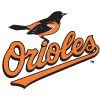 Gunnar Henderson, SS, Orioles: Henderson, RotoWire's second-ranked prospect, made his major-league debut on the final day of August and immediately made an impact, homering in his first career game and stealing a base in his second. Through his first week in the majors, the 21-year-old infielder has started at three different positions while slashing .296/.321/.481. It's been quite the year for Henderson, who wasn't without hype heading into the season but wasn't thought to be in this tier of prospect nor this close to his debut. On FanGraphs' preseason Top 100, for example, he ranked a modest 66th and was given an expected ETA of 2024. Skepticism seemed warranted, as he'd only played five Double-A games heading into this season and managed a merely decent 107 wRC+ alongside a 31.7 percent strikeout rate between that level and High-A last year. He cut his strikeout rate to 18.3 percent in 47 Double-A games to start this season, and while that number jumped up to 26.4 percent upon his promotion to Triple-A, it came with a 127 wRC+. How often he whiffs in the majors will determine how useful he is down the stretch, as he seemingly does everything else.
Gunnar Henderson, SS, Orioles: Henderson, RotoWire's second-ranked prospect, made his major-league debut on the final day of August and immediately made an impact, homering in his first career game and stealing a base in his second. Through his first week in the majors, the 21-year-old infielder has started at three different positions while slashing .296/.321/.481. It's been quite the year for Henderson, who wasn't without hype heading into the season but wasn't thought to be in this tier of prospect nor this close to his debut. On FanGraphs' preseason Top 100, for example, he ranked a modest 66th and was given an expected ETA of 2024. Skepticism seemed warranted, as he'd only played five Double-A games heading into this season and managed a merely decent 107 wRC+ alongside a 31.7 percent strikeout rate between that level and High-A last year. He cut his strikeout rate to 18.3 percent in 47 Double-A games to start this season, and while that number jumped up to 26.4 percent upon his promotion to Triple-A, it came with a 127 wRC+. How often he whiffs in the majors will determine how useful he is down the stretch, as he seemingly does everything else.
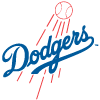 Miguel Vargas, 3B, Dodgers: The hype surrounding Vargas would be considerably higher if he wasn't part of perhaps the deepest organization in the league, one for which veteran third baseman Justin Turner has hit .352/.410/.545 since the break. The 22-year-old has an exciting enough bat to be James Anderson's eighth-best prospect, but he simply doesn't have a clear path to playing time while Turner remains with the team. With that in mind, it was highly encouraging to see the Dodgers start Vargas in left field Saturday against San Diego, seemingly a sign that they do want to work him in wherever possible down the stretch. Vargas has primarily handled the hot corner in the minors, but he did start 22 games in left this season, and the Dodgers can afford to let him learn on the job given their 19-game lead atop the NL West. Vargas' playing time remains murky enough that he's less exciting in the short-term than he would be if he played elsewhere, but we're talking about a player who hit .304/.404/.511 with just five more strikeouts than walks for Triple-A Oklahoma City this year, so there's every chance he hits enough demand more starts.
Miguel Vargas, 3B, Dodgers: The hype surrounding Vargas would be considerably higher if he wasn't part of perhaps the deepest organization in the league, one for which veteran third baseman Justin Turner has hit .352/.410/.545 since the break. The 22-year-old has an exciting enough bat to be James Anderson's eighth-best prospect, but he simply doesn't have a clear path to playing time while Turner remains with the team. With that in mind, it was highly encouraging to see the Dodgers start Vargas in left field Saturday against San Diego, seemingly a sign that they do want to work him in wherever possible down the stretch. Vargas has primarily handled the hot corner in the minors, but he did start 22 games in left this season, and the Dodgers can afford to let him learn on the job given their 19-game lead atop the NL West. Vargas' playing time remains murky enough that he's less exciting in the short-term than he would be if he played elsewhere, but we're talking about a player who hit .304/.404/.511 with just five more strikeouts than walks for Triple-A Oklahoma City this year, so there's every chance he hits enough demand more starts.
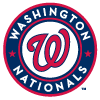 Joey Meneses, 1B/OF, Nationals: Ordinarily, 30-year-olds on struggling teams aren't the place to look for value down the stretch, but the Nationals have proven willing to give opportunities to older players without much experience in recent years, previously with Yadiel Hernandez and now with Meneses. Meneses' professional career began back in 2011, but he didn't even reach Triple-A until his age-26 season in 2018, and while he posted a 143 ERA for the Phillies' affiliate that year, he didn't generate any big-league interest the following winter. A brief stay in Japan ended early the next season due to a PED suspension, and it wasn't until August of this year, nearly three months after his 30th birthday, that he finally got his big-league chance. Through 29 games at the highest level, he sure looks like he belongs. He's homered seven times while slashing .339/.371/.568. A .384 BABIP certainly helps, but he's earned a fair bit of his performance. His 10.8 percent barrel rate and 20.2 percent strikeout rate make for a strong combination. Carlos Correa and Manny Machado are within half a point of both marks, to give context on how he's hit the ball so far.
Joey Meneses, 1B/OF, Nationals: Ordinarily, 30-year-olds on struggling teams aren't the place to look for value down the stretch, but the Nationals have proven willing to give opportunities to older players without much experience in recent years, previously with Yadiel Hernandez and now with Meneses. Meneses' professional career began back in 2011, but he didn't even reach Triple-A until his age-26 season in 2018, and while he posted a 143 ERA for the Phillies' affiliate that year, he didn't generate any big-league interest the following winter. A brief stay in Japan ended early the next season due to a PED suspension, and it wasn't until August of this year, nearly three months after his 30th birthday, that he finally got his big-league chance. Through 29 games at the highest level, he sure looks like he belongs. He's homered seven times while slashing .339/.371/.568. A .384 BABIP certainly helps, but he's earned a fair bit of his performance. His 10.8 percent barrel rate and 20.2 percent strikeout rate make for a strong combination. Carlos Correa and Manny Machado are within half a point of both marks, to give context on how he's hit the ball so far.
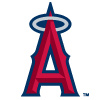 Jose Suarez, SP, Angels: Suarez is a prime example of the value that can be found down the stretch on rosters of the also-rans that fans have stopped paying attention to. Prior to the break, Suarez posted an entirely forgettable 5.60 ERA in nine starts and two relief appearances. That number was a near match for the 5.70 ERA he recorded across his first three MLB seasons, so you can certainly be forgiven for not giving him much thought. Since the break, however, he's cruised to a 1.76 ERA in seven starts, and while that's taken some good fortune in the form of a .234 BABIP, it looks like there's something legitimate here as well. He's increased his strikeout rate to 23.9 percent while cutting his walk rate to 5.5 percent over that stretch, both significant improvements over the 20.1 percent strikeout rate and 9.5 percent walk rate he'd managed to that point in his career. He appears to now trust his slider, throwing it 26.4 percent of the time after shelving it last year and using it just 9.9 percent of the time before the break.
Jose Suarez, SP, Angels: Suarez is a prime example of the value that can be found down the stretch on rosters of the also-rans that fans have stopped paying attention to. Prior to the break, Suarez posted an entirely forgettable 5.60 ERA in nine starts and two relief appearances. That number was a near match for the 5.70 ERA he recorded across his first three MLB seasons, so you can certainly be forgiven for not giving him much thought. Since the break, however, he's cruised to a 1.76 ERA in seven starts, and while that's taken some good fortune in the form of a .234 BABIP, it looks like there's something legitimate here as well. He's increased his strikeout rate to 23.9 percent while cutting his walk rate to 5.5 percent over that stretch, both significant improvements over the 20.1 percent strikeout rate and 9.5 percent walk rate he'd managed to that point in his career. He appears to now trust his slider, throwing it 26.4 percent of the time after shelving it last year and using it just 9.9 percent of the time before the break.
FALLERS
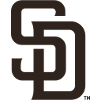 Sean Manaea, SP, Padres: The Padres announced Monday that Manaea's next turn in the rotation would be skipped, something that would have been unthinkable in the early part of the year. In the lefty's first 11 starts for San Diego, he cruised to a 3.52 ERA and 1.09 WHIP, striking out 25.6 percent of opposing batters. He's been a different guy since mid-June, however, as he owns a 7.01 ERA and 1.63 WHIP over his last 14 outings, with his strikeout rate dipping (albeit less dramatically) to 21.6 percent. His ERA jumps to 9.21 since the start of August, including a 15.12 mark over his last two starts. If you're looking for good news, you could point to the fact that his velocity and pitch mix are virtually unchanged over his slump, but that also means there's no easy thing to point to that could spur a bounceback. The Padres are clearly losing faith in the veteran lefty so following suit and dropping him in shallow and mid-sized leagues is seemingly defensible.
Sean Manaea, SP, Padres: The Padres announced Monday that Manaea's next turn in the rotation would be skipped, something that would have been unthinkable in the early part of the year. In the lefty's first 11 starts for San Diego, he cruised to a 3.52 ERA and 1.09 WHIP, striking out 25.6 percent of opposing batters. He's been a different guy since mid-June, however, as he owns a 7.01 ERA and 1.63 WHIP over his last 14 outings, with his strikeout rate dipping (albeit less dramatically) to 21.6 percent. His ERA jumps to 9.21 since the start of August, including a 15.12 mark over his last two starts. If you're looking for good news, you could point to the fact that his velocity and pitch mix are virtually unchanged over his slump, but that also means there's no easy thing to point to that could spur a bounceback. The Padres are clearly losing faith in the veteran lefty so following suit and dropping him in shallow and mid-sized leagues is seemingly defensible.
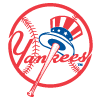 Gleyber Torres, 2B/SS, Yankees: Torres is still just 25 years old, but he's no stranger to big swings in his talent level. After breaking out to hit 38 homers and post an .871 OPS in 2019, he dropped to just three homers and a .724 OPS in the shortened 2020 season and sunk still further to just nine homers and a .697 OPS last year. Throughout the early part of this season, he seemed to be putting his two-year slump behind him, as he entered the break with 14 homers and a .268/.325/.484 slash line. He's fallen off a cliff since then, however, managing just four homers and a .188/.219/.292 line thus far in the second half. A sudden inability to make contact seems to be the primary culprit, as his 30.0 percent strikeout rate since the break is well above his career 21.9 percent mark. Worryingly, that's a new development for Torres, who maintained a solid 19.5 percent strikeout rate through his sub-par 2020 and 2021 seasons. An inconsistent player adding a new way to struggle to his game isn't what you want to see.
Gleyber Torres, 2B/SS, Yankees: Torres is still just 25 years old, but he's no stranger to big swings in his talent level. After breaking out to hit 38 homers and post an .871 OPS in 2019, he dropped to just three homers and a .724 OPS in the shortened 2020 season and sunk still further to just nine homers and a .697 OPS last year. Throughout the early part of this season, he seemed to be putting his two-year slump behind him, as he entered the break with 14 homers and a .268/.325/.484 slash line. He's fallen off a cliff since then, however, managing just four homers and a .188/.219/.292 line thus far in the second half. A sudden inability to make contact seems to be the primary culprit, as his 30.0 percent strikeout rate since the break is well above his career 21.9 percent mark. Worryingly, that's a new development for Torres, who maintained a solid 19.5 percent strikeout rate through his sub-par 2020 and 2021 seasons. An inconsistent player adding a new way to struggle to his game isn't what you want to see.
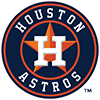 Jeremy Pena, SS, Astros: Pena's MLB career began in very promising fashion. Through July 5, he hit .276/.327/.482 with 12 homers and eight steals in 62 games, filling the gap left by Carlos Correa's departure. What seemed like a seamless transition from one excellent shortstop to another has hit a snag since then, however. Over the last two months, Pena has homered just four times and stolen just one base while slashing .214/.234/.316, good for a 53 wRC+. His plate discipline gives him a very poor foundation, as he's struck out 26.7 percent of the time while posting a 2.9 percent walk rate over that stretch. He's also hitting the ball with less authority when he does make contact, with his barrel rate dropping from 10.5 percent over his strong start to 6.9 percent over his two-month slump. That latter mark is still far from terrible, and his defense should buy him the time to work his way through his struggles, but he could be prone to similar rough patches going forward given his impatient approach.
Jeremy Pena, SS, Astros: Pena's MLB career began in very promising fashion. Through July 5, he hit .276/.327/.482 with 12 homers and eight steals in 62 games, filling the gap left by Carlos Correa's departure. What seemed like a seamless transition from one excellent shortstop to another has hit a snag since then, however. Over the last two months, Pena has homered just four times and stolen just one base while slashing .214/.234/.316, good for a 53 wRC+. His plate discipline gives him a very poor foundation, as he's struck out 26.7 percent of the time while posting a 2.9 percent walk rate over that stretch. He's also hitting the ball with less authority when he does make contact, with his barrel rate dropping from 10.5 percent over his strong start to 6.9 percent over his two-month slump. That latter mark is still far from terrible, and his defense should buy him the time to work his way through his struggles, but he could be prone to similar rough patches going forward given his impatient approach.
 Josiah Gray, SP, Nationals: Gray's above-average 25.5 percent strikeout rate is enough to keep whiff-obsessed fantasy players like me at least somewhat interested, but that's about all that's gone well for him this year. His 10.2 percent walk rate is the second-worst among pitchers who have thrown at least 120 innings, while his 30.9 percent groundball rate is third-lowest among that same group. That latter mark has led to an awful 2.4 H/9, far worse than Jose Berrios' 1.7 HR/9, the second-worst figure among those pitchers. That's all added up to a 4.91 ERA, with much of the damage being done recently, as he owns a 6.15 ERA over his last five outings. Exactly how to value him heading into next season is a tough question. Is he a young pitcher with big upside who's merely fading down the stretch in his first full MLB campaign, or is he someone whose flaws are too strong for his strikeouts to overcome? Whether or not he can reverse his tailspin down the stretch will have a big impact on his 2023 ADP.
Josiah Gray, SP, Nationals: Gray's above-average 25.5 percent strikeout rate is enough to keep whiff-obsessed fantasy players like me at least somewhat interested, but that's about all that's gone well for him this year. His 10.2 percent walk rate is the second-worst among pitchers who have thrown at least 120 innings, while his 30.9 percent groundball rate is third-lowest among that same group. That latter mark has led to an awful 2.4 H/9, far worse than Jose Berrios' 1.7 HR/9, the second-worst figure among those pitchers. That's all added up to a 4.91 ERA, with much of the damage being done recently, as he owns a 6.15 ERA over his last five outings. Exactly how to value him heading into next season is a tough question. Is he a young pitcher with big upside who's merely fading down the stretch in his first full MLB campaign, or is he someone whose flaws are too strong for his strikeouts to overcome? Whether or not he can reverse his tailspin down the stretch will have a big impact on his 2023 ADP.









